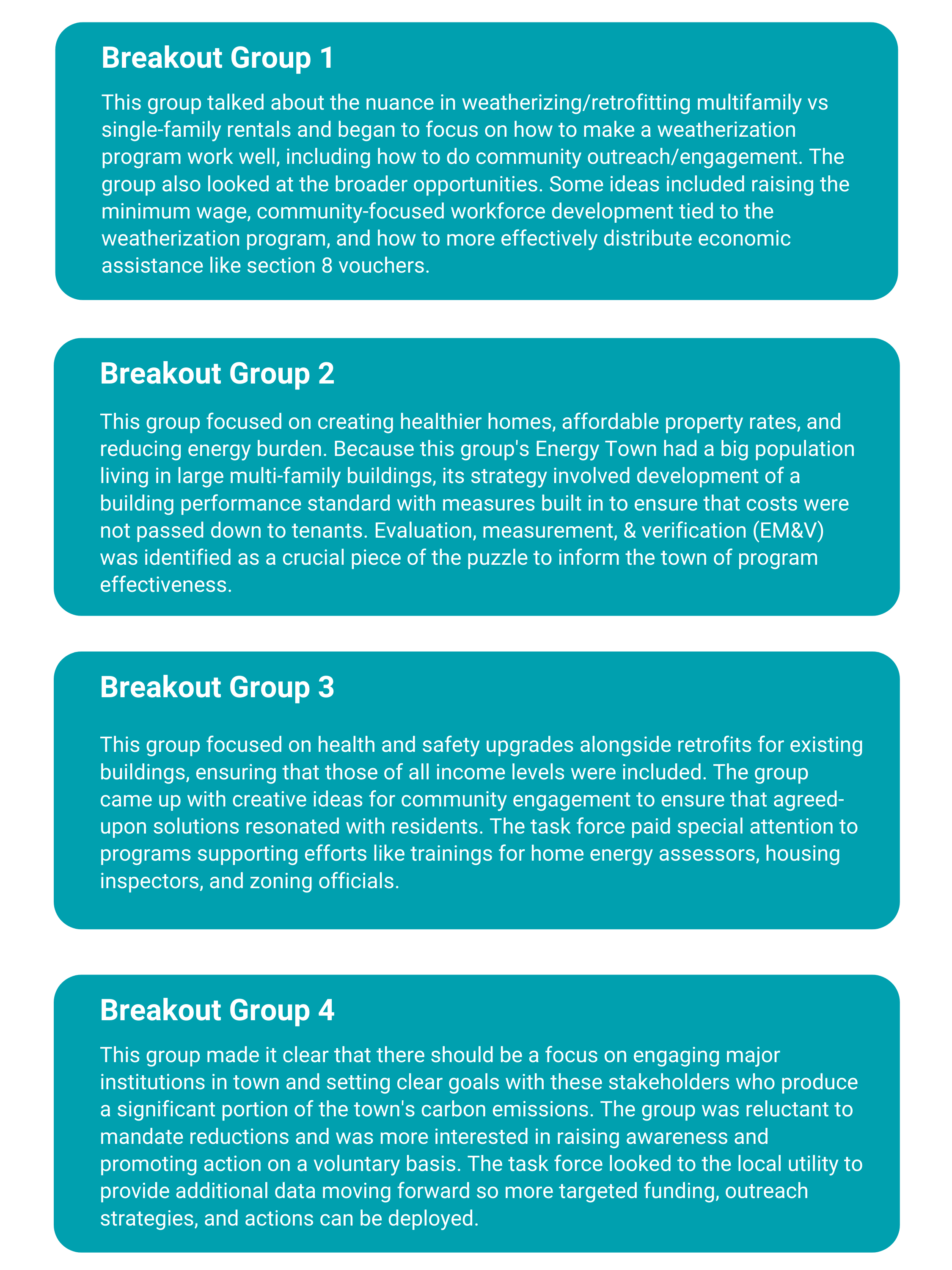

By Bryan Evans | Wed, March 23, 22
I spent one recent Sunday night going to my storage unit to get a box full of dress clothes. Working from home the past two years, it has been over 14 months since I last attended an in-person conference and even longer since I have put on a suit jacket. I was very appreciative to attend the Northeast Sustainable Energy Association (NESEA) BuildingEnergy Boston 2022 conference hosted recently at the Westin Boston Seaport District. Even with masks, it was great to see all the attendees, most of whom I have only seen in a little square box on my screen.
Bringing in over 750 leaders and emerging professionals, the conference was jam-packed with live product demonstrations, opportunities to network, and session after session of lessons learned, deep dives on case studies, and emerging trends, technologies, and innovative policies and programs throughout the region.
NEEP led one of the sessions, Collaborating for Community Decarbonization, on Monday afternoon. We led attendees through a thought provoking, collaborative, role-playing exercise where participants took on a role in Energy Town’s newly created Energy Task Force. Participants were tasked to work interactively and collaboratively to identify innovative solutions to reduce the community’s greenhouse gas emissions from target sectors, empower residents to make efficiency improvements, leverage existing resources, and benefit the local workforce. This exercise acted as the Energy Task Force’s first meeting and intended to innovate potential solutions rather than problem-solve for particular solutions, while encouraging participants to get into character (utility, homeowner, realtor, mayor, etc.).
NEEP staff guided each group with best practices and expertise from their own work in various communities across the Northeast and Mid-Atlantic. Each group had a different scenario and ran through the same process where the group tackled a problem with key context points, identified primary goals and priorities for their community, assigned roles for each participant, and considered planning needs, policy and program options, and next steps. Summarized below are a brief overview and takeaways from each neighborhood of Energy Town, USA.
Wrap Up
While each group was working through its first meeting as the Energy Town Task Force, I was able to act as an on-the-scene journalist, running from table to table and bringing in new scenarios to stir the pot and enhance discussion and collaboration. From my perspective, it was very interesting to see everyone get into character and step aside from his or her everyday roles. Members of the group really got into character and posed questions to one another about municipal needs and administration capacity, as well as utility incentives and ability to support the program.
“The most interesting thing about the session to me was that we started to talk about a pretty traditional energy efficiency program, but realized we needed to step back to not be putting a band-aid on a bullet hole. It was fun!” – Chase Macpherson
At the end of the session, participants walked away with best practices for facilitating and participating in a collaborative, problem-solving process. In addition, participants left with tangible ideas to achieve goals through program creation, and incorporate equitable policies or programs in doing so. One of the participants even stated after the session that this would be a great exercise to run with his town’s sustainability committee and local government.

